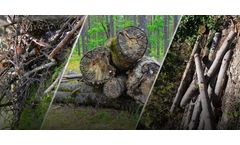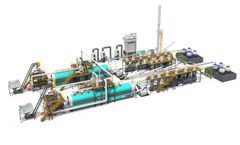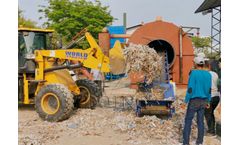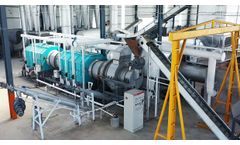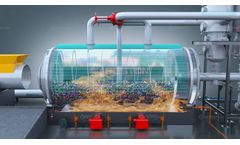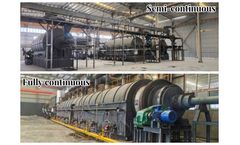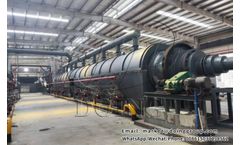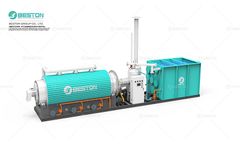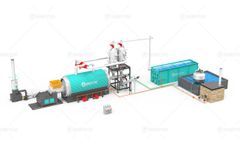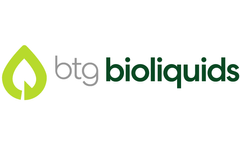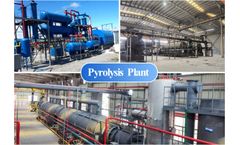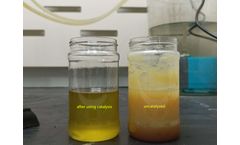Pyrolysis A Continuous Process Articles & Analysis: Older
293 articles found
Charcoal production from forest waste represents an innovative approach to managing natural resources while addressing environmental and economic challenges. Through the integration of a charcoal making machine, this process offers a sustainable alternative to traditional practices, emphasizing resource efficiency and ecological preservation. Utilizing Forest Waste as a Resource Forest waste, ...
A key question that often arises is whether pyrolysis is a continuous process. The answer depends on the type of pyrolysis system used. ...
To recycle plastic to fuel oil using a pyrolysis vessel, follow these steps: 1. Preparation of Plastic Material: Collect and sort the plastic waste, ensuring it is free from contaminants that may interfere with the pyrolysis process. ...
The feedstock must be processed to a consistent size for efficient pyrolysis. Typically, the material is shredded or ground to ensure uniformity. ...
The thermal efficiency of a pyrolysis reactor is a critical factor in determining the overall performance, energy consumption, and economic feasibility of the pyrolysis process. Pyrolysis, a thermochemical decomposition process, is used to convert organic materials such as plastics, rubber, and biomass into valuable products like oil, gas, and charcoal. The efficiency with which the reactor ...
Setting up a continuous pyrolysis machine project involves a range of equipment and systems that work together to efficiently process waste materials (such as tires, plastics, rubber, medical waste, construction waste, e-waste, etc.) into useful by-products like fuel oil, carbon black, and syn-gas. ...
With the growing urgency to find sustainable energy sources, plastic fuel oil, derived from waste plastic through pyrolysis, has emerged as a promising alternative. This oil offers an innovative way to convert non-recyclable plastics into usable fuel, contributing to waste management and energy production. But to fully appreciate its potential, it’s essential to explore the thermal ...
Unlike batch or semi-continuous pyrolysis plants, where processing takes place in phases, continuous pyrolysis operates in a steady, uninterrupted cycle. ...
The biomass fraction of pyrolysis refers to the portion of biomass material that undergoes thermal decomposition in the pyrolysis process to produce valuable products such as biochar, bio-oil, and syngas. This fraction is significant in determining the efficiency and output of a pyrolysis system. Key Aspects of the Biomass Fraction in Pyrolysis 1. Composition: Biomass is primarily composed of ...
Sealing is a crucial factor in the overall performance and efficiency of a pyrolysis reactor. The technology behind pyrolysis revolves around the thermal decomposition of materials in the absence of oxygen. Any failure in sealing leads to oxygen infiltration, disrupting the pyrolysis process. This not only affects the quality of the end products but also poses serious safety risks. Understanding ...
Rice husks have long been regarded as agricultural waste. Through innovative carbonization machine, rice husks can be transformed into biochar, bringing new vitality to agriculture, energy, environmental protection and other fields. In the context of advocating green circular economy today, how to effectively utilize agricultural by-products and achieve sustainable use of resources has become ...
The mini pyrolysis plant represents a significant opportunity for investors looking to enter the waste-to-energy sector. By converting waste materials such as plastics, tires, and biomass into valuable by-products, mini pyrolysis plants offer a sustainable solution to waste management while generating potential revenue streams. Understanding the investment scenario for a mini pyrolysis plant ...
Contaminants are removed to improve the efficiency of the pyrolysis process. Heating: The prepared plastic waste is subjected to high temperatures, usually between 300°C and 900°C, in a pyrolysis reactor. ...
Continuous pyrolysis is a complex process that requires specialized equipment. ...
In January 2014 BTG Bioliquids / Empyro BV started construction of its pyrolysis oil production facility in Hengelo, the Netherlands. The Empyro plant converts 5 tons per hour of wood residues into pyrolysis oil, process steam and electricity. Start-up of the installation commenced in early 2015 and production has gradually increased since. Nameplate capacity was reached in 2017 and since then ...
Pyrolysis is a transformative technology that can effectively process a wide range of waste materials, converting them into valuable products like fuel oil, carbon black, and gas. This article outlines the types of raw materials suitable for pyrolysis and describes the general process flow of a waste pyrolysis machine. 1. Types of Raw Materials for Pyrolysis (1)Waste Rubber Tires: Pyrolysis can ...
Beston Group has developed a cutting-edge catalytic pyrolysis technology that significantly enhances the efficiency and environmental friendliness of the process. By introducing catalysts into the reaction chamber, Beston's technology achieves several key benefits: Improved Oil Quality: Catalysts facilitate the breakdown of complex plastic molecules, resulting in higher-quality fuel oil with ...
Proper maintenance of a pyrolysis reactor is critical to ensure its efficient operation, longevity, and safety. ...
Employ cutting-edge technologies in their machines to optimize the pyrolysis process. Develop proprietary technologies that offer competitive advantages. ...
Understanding Biomass Pyrolysis Biomass pyrolysis is a thermochemical decomposition process that occurs in the absence of oxygen. ...

